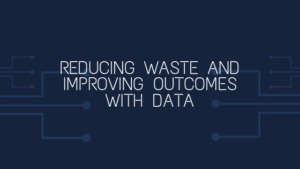
I recently came across an article about a 55-year-old woman who was diagnosed with breast cancer. She was so terrified of her diagnosis that she readily followed the advice from her medical team which included lumpectomy surgery, chemotherapy, other medications and six weeks of radiation treatment. She agreed to the lengthy radiation procedure because she didn’t know there was another option and that in a case like hers — where the patient is over 50 and cancer hasn’t spread — the shorter therapy is the first option before the radiation treatment. The patient remarked that it’s disturbing to think she might have been overtreated.
This scenario is common in America’s healthcare. Many doctors routinely order tests that are unnecessary and wasteful. This isn’t a knock on doctors. While intentions are good, outcomes are always not. Some order high-cost diagnostic tests of no value. Others require patients to submit to irrelevant types of genetic testing. Hundreds of patients get lots of procedures, screenings, tests, and treatments that offer little or no benefit.
Skyrocketing costs can be stopped
The increasing cost of healthcare due to excessive treatments is financially devastating for patients and organizations responsible for the care of patients. Considering the number of patients in America, these unnecessary tests and excessive treatments add up to substantial expenses that drive the cost of healthcare up unsustainably.
A test conducted by the Washington Health Alliance showed that more than 600,000 patients had a treatment they didn’t need, wasting an estimated $282 million. The group checked the insurance claims from 1.3 million patients in Washington state who received one of 47 tests that medical experts flagged as overused or unnecessary.
A 2012 study published by the National Academy of Medicine showed that 25% of patients said their health care provider has had to re-order tests to have accurate information for diagnosis, 85% of people had not been informed by comparative quality information about their health care, and that an estimated $750 billion is spent on unnecessary administration, inefficiencies, and care that does not improve health.
With billions of dollars going to waste, what can we do to reduce unnecessary tests and procedures and improve outcomes?
Uncovering the problem opens up the opportunity
Swati Abbott, CEO of Blue Health Intelligence, firmly believes her company can help reduce waste through the use of artificial intelligence and expert analytics. Blue Health Intelligence is a privately held healthcare analytics and intelligence company with access to the largest, most current health care data repository in the US. It leverages data insights into innovative analytics solutions. BHI has proven itself a valuable resource for any entity committed to high-quality healthcare coverage and services in the country.
In our podcast interview, she mentioned that there are two things health leaders should focus on. One is we don’t have very good outcomes despite spending the most per capita, and the second one is how to reduce cost by taking out unnecessary services and waste to improve quality and satisfaction.
She elaborates that we can’t overlook that in today’s world, industry leverages the power of data, so health care needs to understand the patterns of utilization to find out the things we’re not doing so well. Once we find what we are failing at, we must work on improving that.
A thoughtful approach backed by data
When I asked her to explain the waste in healthcare and what the best approach to stop it, she said, “To give you an example, low back pain, or headache, you’re getting all kinds of tests done, imaging done. Is that necessary? Another example that is really interesting is, let’s say people with osteoarthritis. They may go in and get a knee replacement or hip replacement. Well, the appropriate protocol should be, did you get physical therapy? Did you try alternative methods of trying to remedy the issue before you just jump into a joint replacement, which is expensive and could have complications?” The knee jerk treatment decisions must stop. The way to stop them is by studying the costs, outcomes, and satisfaction of these decisions and holding all stakeholders accountable for better results.
A snapshot of BHI’s offering
BHI has some of the most interesting analytics tools I have ever seen that look at making improvements in an episode of care, quality and leveraging social determinants of health.
The BHI Episode of Care tool bundles care for thousands of conditions and complex treatments into a single unit of analysis. It leverages extensive data to analyze over 1,500 conditions and procedures, producing clinically accurate and comprehensive comparisons. Its unique integration of medical and pharmacy claims data with clinical logic empowers healthcare stakeholders to make more informed contracting decisions, conduct research, and better understand the cost and quality of care offerings in different settings.
The BHI Healthcare Barrier Index weighs claims and socio-economic data to determine the level of difficulty any individual or population will encounter when seeking care. Stakeholders, in turn, use BHI’s Healthcare Barrier Index to identify interventions and supports that have the highest likelihood of successfully helping individuals get the healthcare services they need. Since 40% of overall health is impacted by social and economic factors, knowing what non-medical factors need to be addressed – and when – are key to ensuring the success of any care management efforts.
BHI’s CarePulse rules engine replicates and shows progress towards achieving industry-recognized quality measures, including HEDIS metrics, NCQA, AHRQ quality measures, prescription fill rates, and more. CarePulse can also reproduce any custom measures your organization has developed, such as provider attribution logic, to help achieve healthcare’s Triple Aim. Our fully transparent view of quality-related measurements helps organizations find gaps in care, identify provider improvement opportunities, and/or assess how partners are faring under risk-based arrangements.
Operationalizing data insights into practice
“Those are the types of things that data can shine a light on. And then it tells you, yes, let’s consider this or let’s look at a policy where we provide alternative care before we jump into surgery.” It is easier said than done.
During our conversation with Abbott, I asked her to help us understand how to operationalize these insights. She walked me through the process which goes as follows; After conducting a comparative analysis of performance, outcomes, and costs, she finds outliers that could be meaningful areas to target waste reduction. She communicates with her executive team by sending a newsletter and makes a recommendation based on the findings. She mentions, “I have a newsletter that I send to all my CEOs and say I wanted to shine a light on this issue for you. We do that to share some of these findings. And then that individual plan, they work with all of the Blue Cross Blue Shield plans in the U.S., if they think it’s appropriate, may do their individual study or set a policy…” The findings are not imposed. They are communicated with the specific plans that could benefit from the areas of improvement. Then, the plans dig deeper and even work with provider organizations to better understand prior to imposing policies. They use the data to make conversations objective and to work to achieve the best outcomes and the lowest cost.
Benchmarking to uncover savings opportunity
Another way they use their data engine and practices to improve outcomes is by using benchmarking for saving solutions. She said “What we do is we can work with any individual Blue Cross plan and show them what are the top 10 drivers of spend. Let’s look at the inpatient area hospitalizations, physician office area, drugs, etc. And we showed them the top 10, the top 20 for that particular Blue Cross plan. And then we compare that on that same chart with benchmarks, regional and national.” By having such a rich data set to compare to, Blue Health Intelligence is able to uncover savings opportunities that a particular plan or employer may not even know about. Having a partner like BHI to shed these types of insights on operational efficiencies leads to massive savings.
They also help large national employers improve the healthcare of their employees and lower their costs. BHI sits down with them, looks at their data, and help these companies understand what the data is saying so they can make data-driven decisions to improve employee health and reduce costs.
In today’s technology-driven world, data plays a big role in many industries, including the health space. By studying and finding opportunities in large amounts of data, BHI helps us better understand patterns and correlations that can reduce waste and improve outcomes. We can gain insights and create data-driven decisions to reduce unnecessary treatments, reduce spending and improve healthcare outcomes for everyone.
To learn more about the insights and advancements Blue Health Intelligence delivers, click here.
To listen to the full interview with Swati Abbot, CEO at Blue Health Intelligence click here.
According to the 2020 Centers for Disease Control and Prevention report, roughly 34.2 million Americans have diabetes,...
Read MoreAs a farmer, Rod was used to long days. He worked 18 hours a day, 7 days...
Read MoreWith investors receiving hundreds of pitch decks every year, how do you create a compelling presentation that...
Read More
Brittany Busse Co-Founder, President, and Chief Medical Officer at
ViTelHealth


Stephen Thorne Founder and CEO at
Pacific Dental Services

Keith Carlson Nurse Career Coach